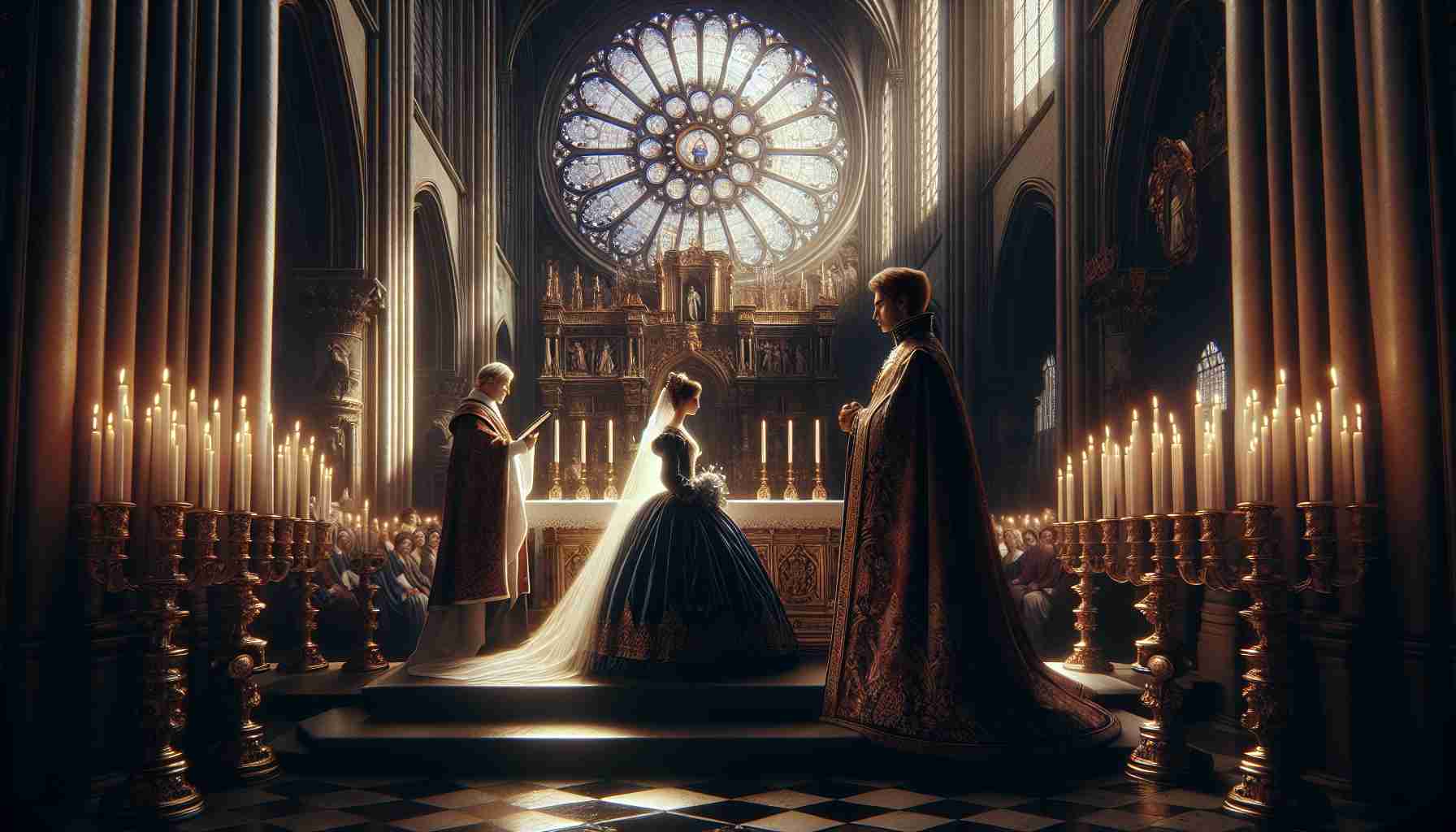

The bells up St. Paul’s chanted high into the June air, each toll gilded in gold light thrown by the windows of the great cathedral. London watched in reverent hush as a king and queen crossed the worn threshold—Henry, tall and flushed at eighteen, and Catherine of Aragon, cloaked in dignity and a deep blue gown richer than any tapestry in the realm. The year was 1509, and it seemed, for a moment, that heaven had blessed the union with favor.
Whispers trailed behind Catherine like the hem of her dress: widow of Henry’s late brother, Arthur, and daughter of the great Catholic monarchs Ferdinand and Isabella. Her Spanish eyes, dark and earnest, met Henry’s as they knelt—two figures beneath the vaulted cruciform ceiling of the cathedral. “For this cause,” intoned the priest, voice solemn with ancient words, “shall a man leave his father and mother, and shall be joined unto his wife, and they two shall be one flesh.” Ephesians 5:31. Their fingers touched at the altar rail, a moment of covenant before God.
Years later, only stone remembered that promise.
The marriage began with tenderness. Catherine bore herself like a queen forged by sorrow and faith—a woman who prayed at dawn and stitched garments for the poor by candlelight. Henry, eager for glory and dynastic security, found in her a steady voice and a partner in courtly grace. But time’s passage is a cruel pageant. After several miscarriages and the heart-wound death of their infant son, it became clear that Catherine—now aging—would not give Henry his coveted male heir.
The storms gathered slowly, cloaked in theological query. Could it be, murmured Henry, that their union was never valid? Had God doomed their marriage because Catherine had once lain with his brother? Levitical law, he argued, condemned such unions. “If a man shall take his brother's wife,” read Henry aloud to Wolsey and bishops bent low with unease, “it is an unclean thing; they shall be childless.” (Leviticus 20:21). But Catherine held the floor of her soul like a fortress. Her union with Arthur had not been consummated—she had come to Henry’s bed as a true bride. More than royal duty, it was conscience and faith that fueled her defiance.
The stone corridors of Whitehall echoed with argument and dust. Rome delayed. The Pope, under the shadow of Catherine's nephew Emperor Charles V, stalled the annulment. Henry, restless and betrayed, turned not to repentance—but power.
In secret, he prepared his breach.
In 1533, as the parchment of Europe trembled with reformation, Henry’s heart found new desire in Anne Boleyn—young, ambitious, Protestant-leaning. Archbishop Thomas Cranmer, newly appointed by Henry himself, pronounced the marriage to Catherine null. In its wake, Henry married Anne in defiance of Roman decree. There was no lightning bolt from heaven—only silence, and then the Parliament's thunder in 1534: The Act of Supremacy. The English king, not the Pope, now stood as supreme head of the Church of England.
Catherine, stripped of her title and separated from her daughter Mary, lived her final years in exile within Kimbolton Castle’s cold chambers. She never wavered from her queenship nor her faith. Her letters bore light despite their sorrow. “Mine eyes desire thee above all things,” she wrote to Henry near the end. “Yours, as ever in the life to come.” Love defied decree.
She died on January 7, 1536. At her funeral, the royal crest of a queen—once displayed proudly—was forbidden. Her body was laid to rest not in Westminster, but at Peterborough Cathedral, far from courtly grandeur. Still, pilgrims came. Still, candles burned for her.
The story did not end in Catherine’s tomb or Henry’s myriad remarriages. What split between them would chart centuries: kings and queens who bled for altars either Roman or Reformed. Bishops burned; Bibles translated; steeples rose and fell under banners of saints or kings. Yet beneath it all, the flashpoint was not theology alone, but the broken vow whispered beneath stone arches: a man and a woman joined, and undone.
Ephesians promised union beyond flesh—a great mystery, Paul had called it, “concerning Christ and the church.” Perhaps Catherine grasped that secret more than most. Hers was no earthly triumph, yet her faith endured beyond annulment, beyond isolation. In losing her crown, she testified to a kingdom not made by man.
And though Henry built his church on sundered vows, even that breach became groundwork for millions to find God not through Rome, but through Scripture and sovereign prayer.
Sometimes salvation, it seems, walks a path chiseled by failure—and through the ruins of a once-sacred union, light finds another way in.